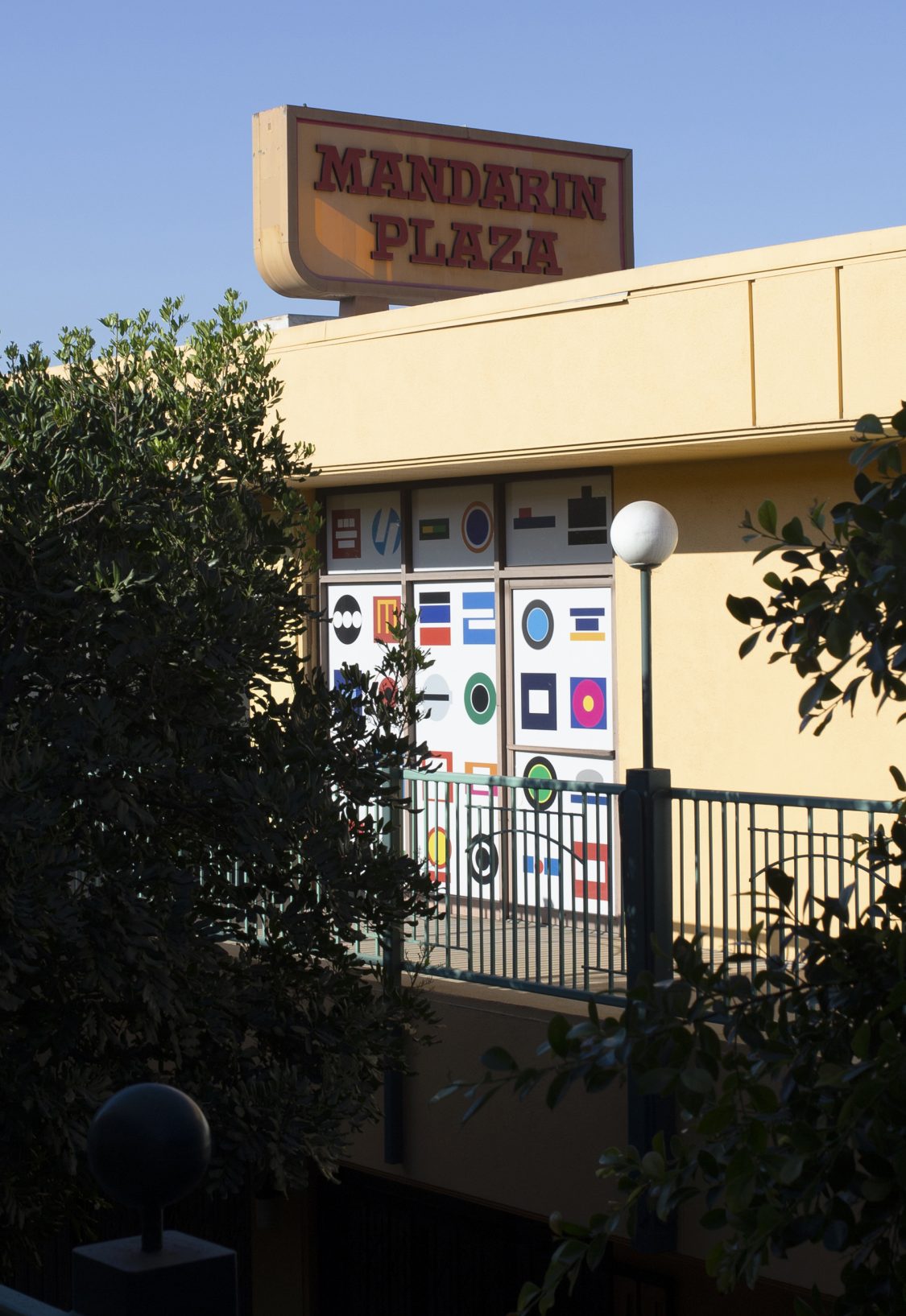
Printed graphic on adhesive perforated vinyl mesh
Installation view
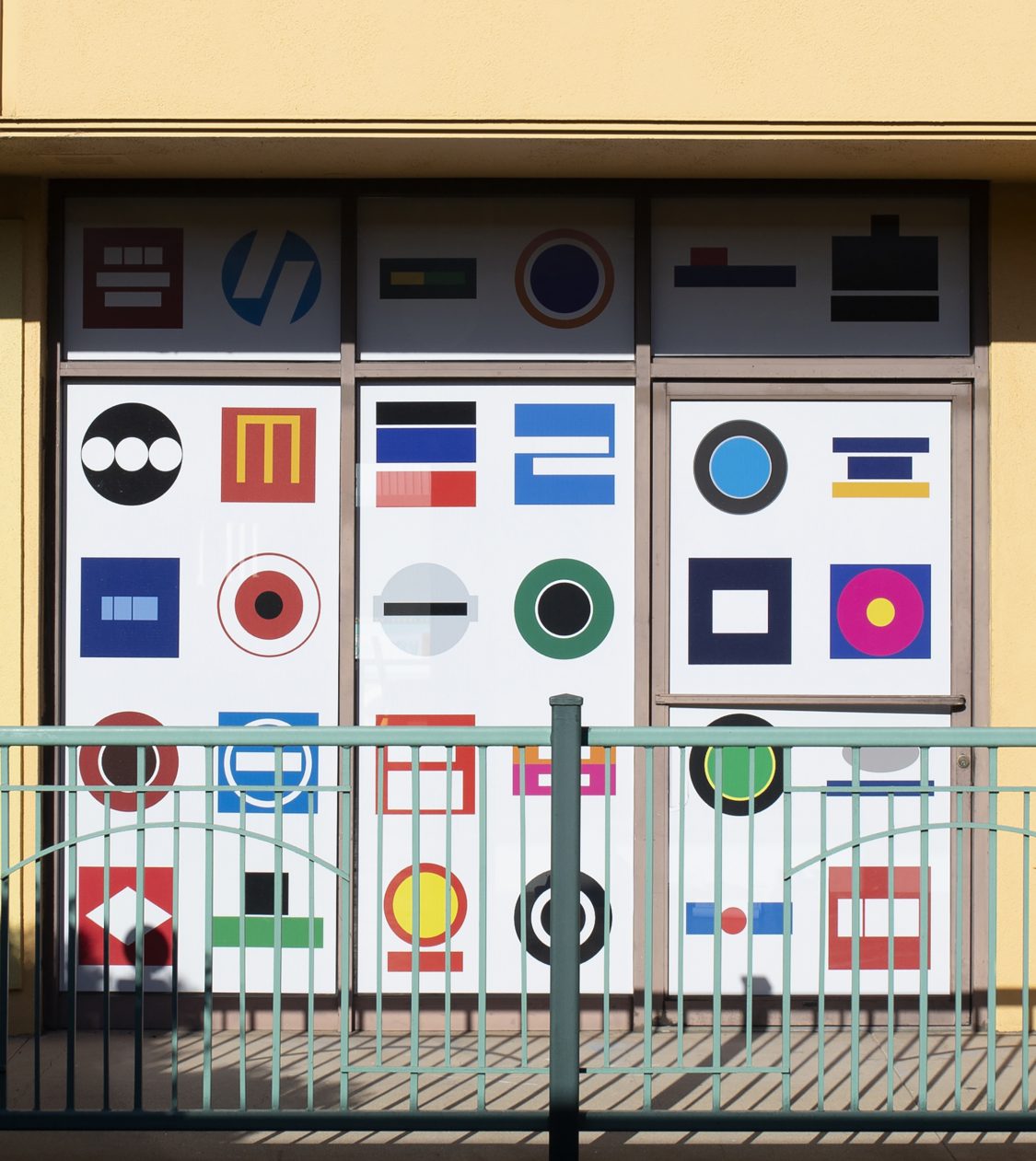
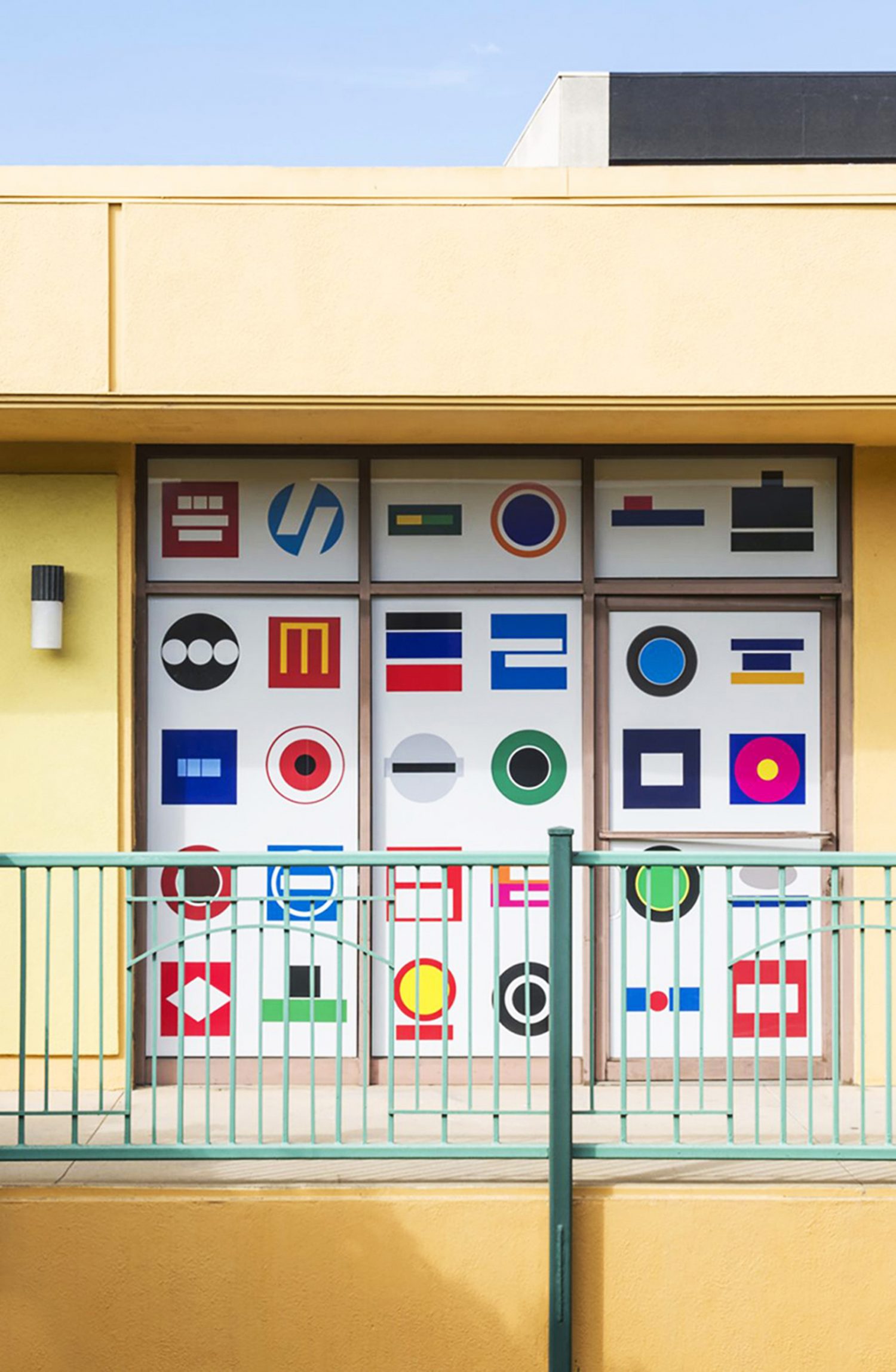
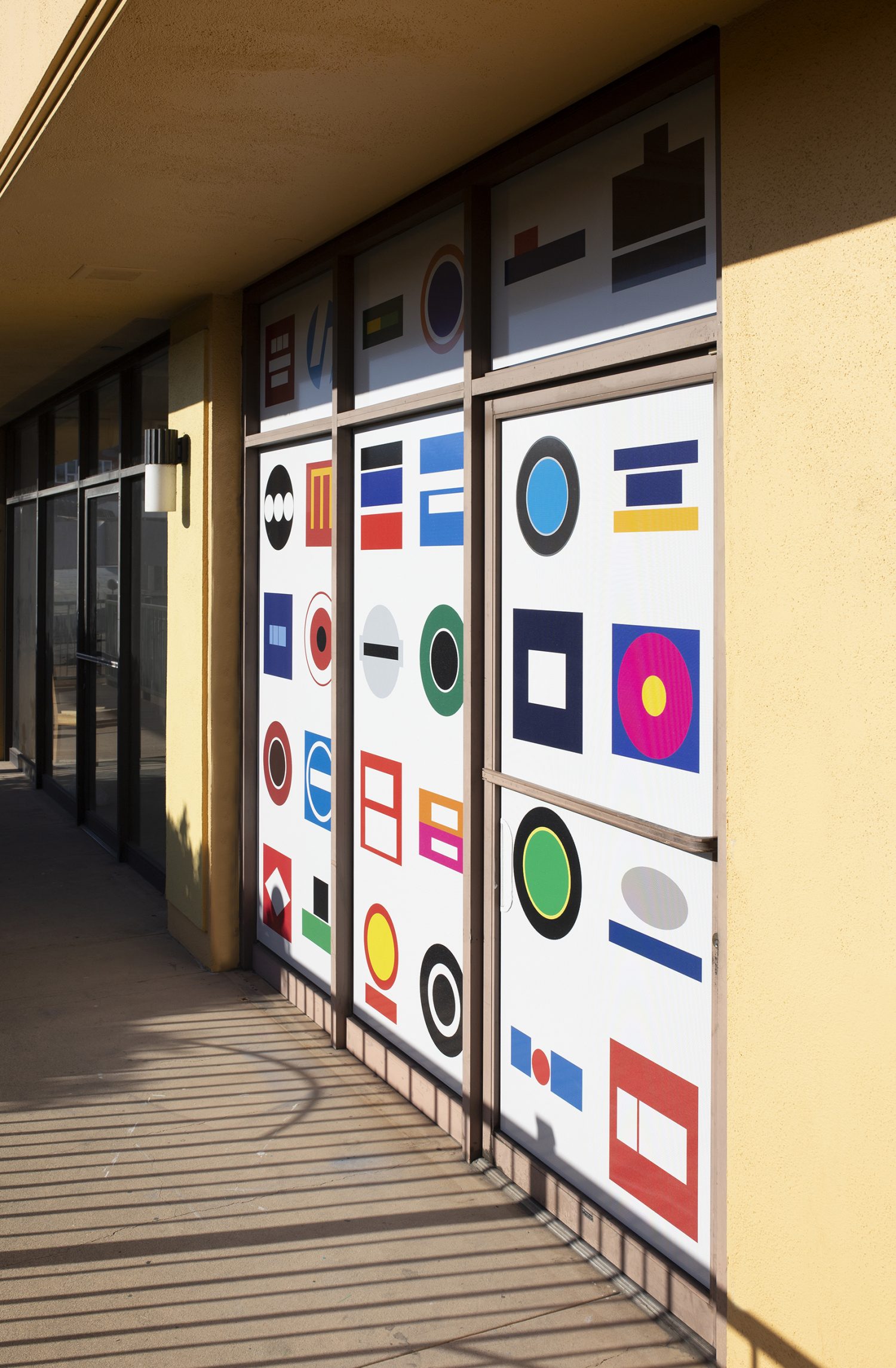
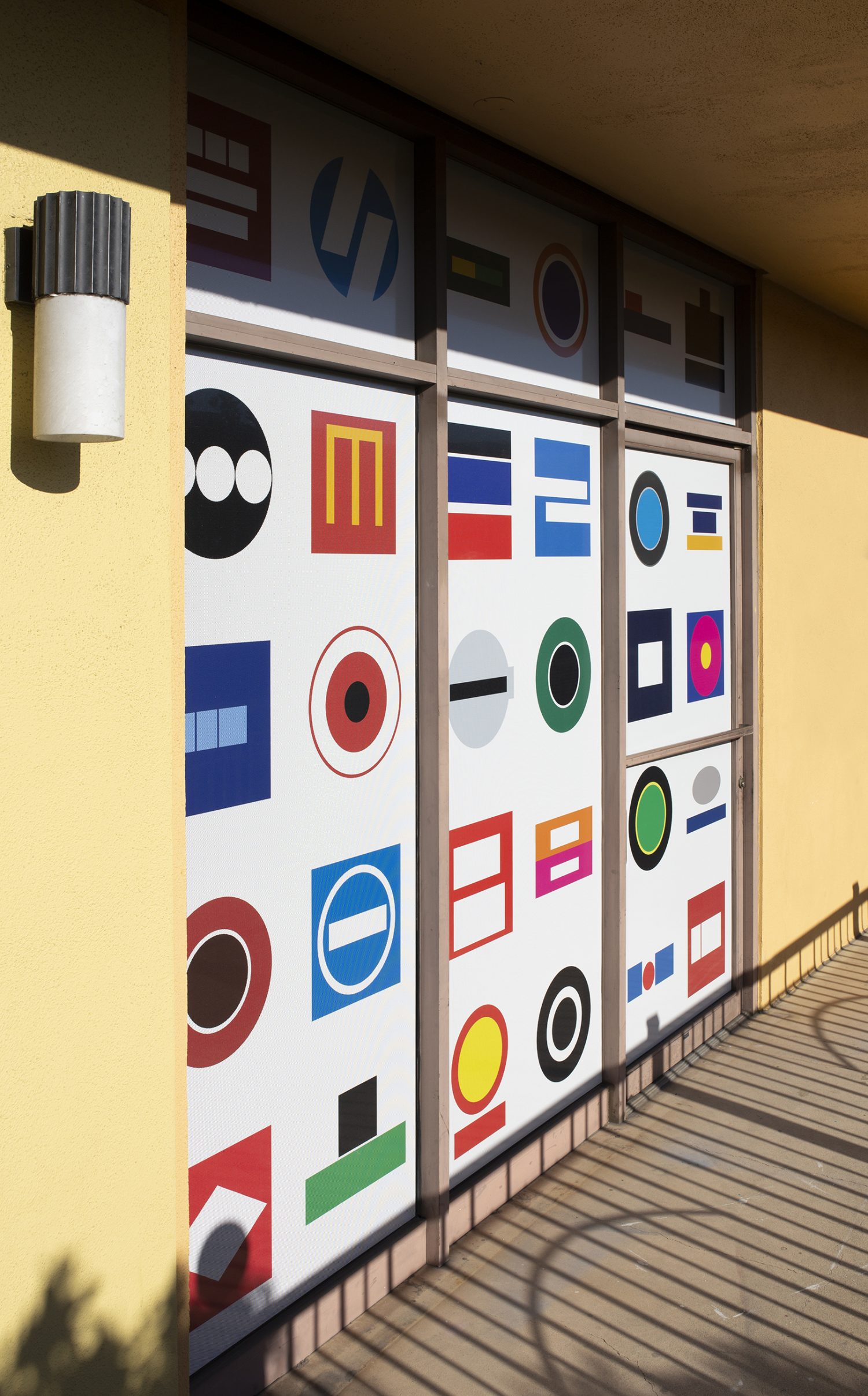
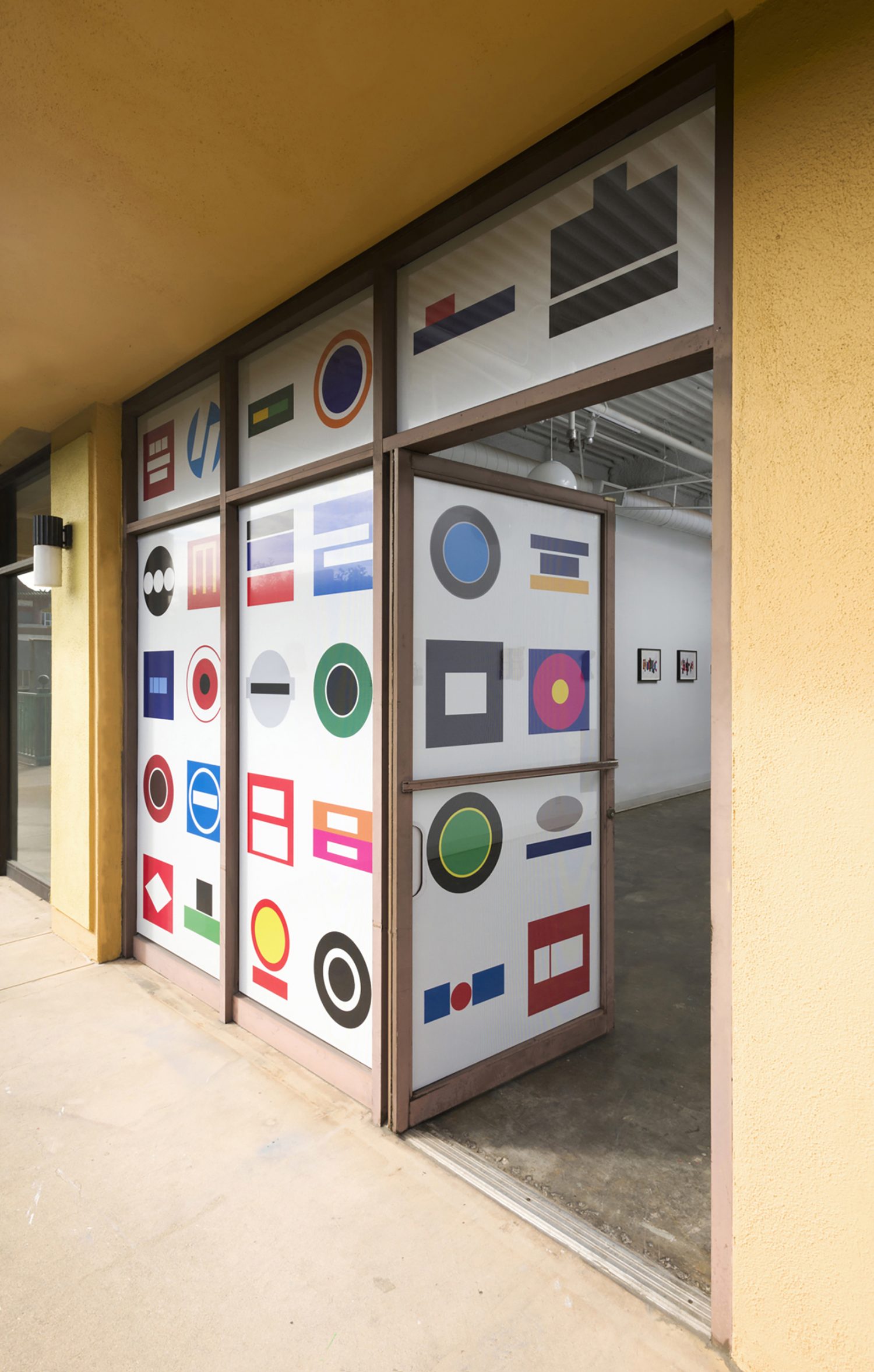
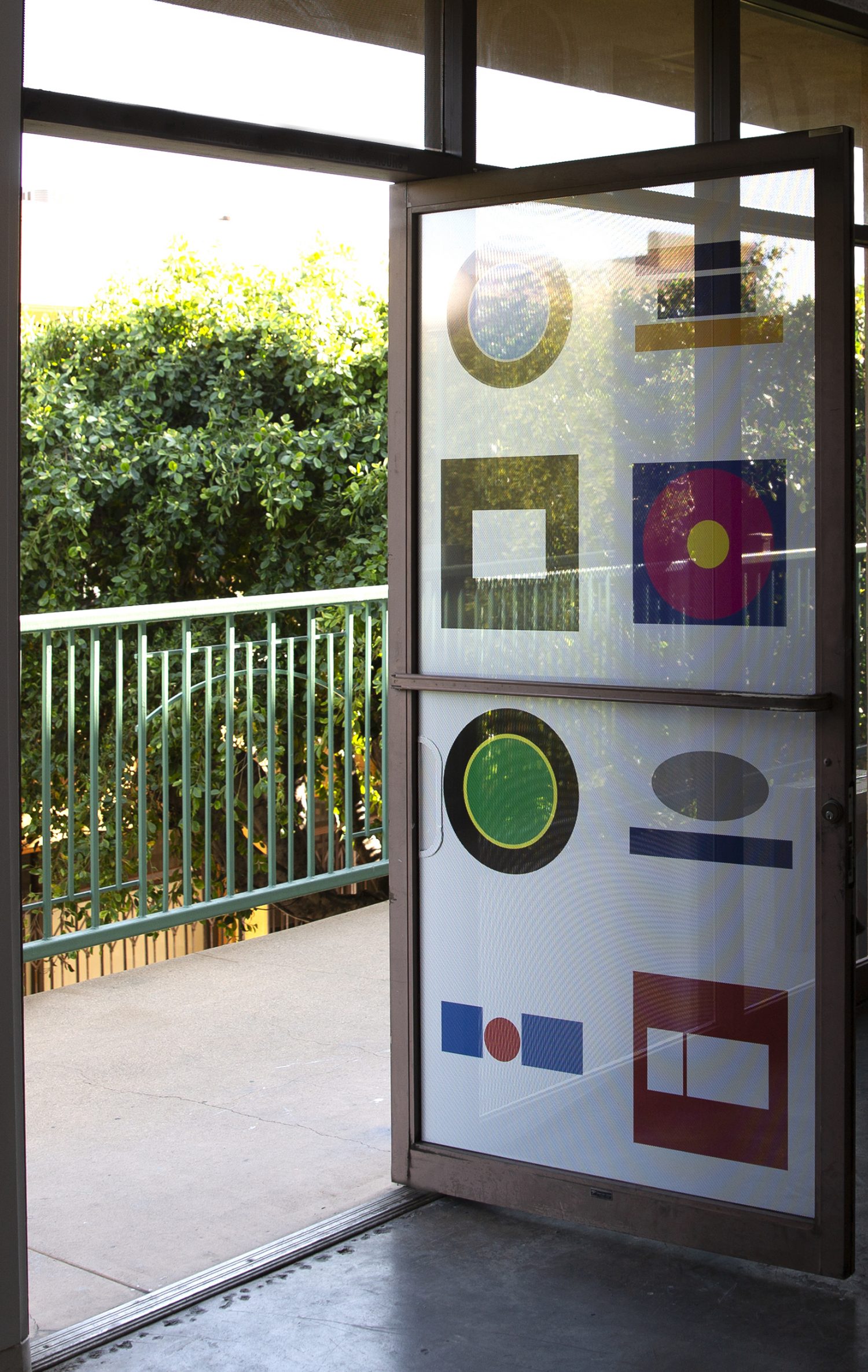
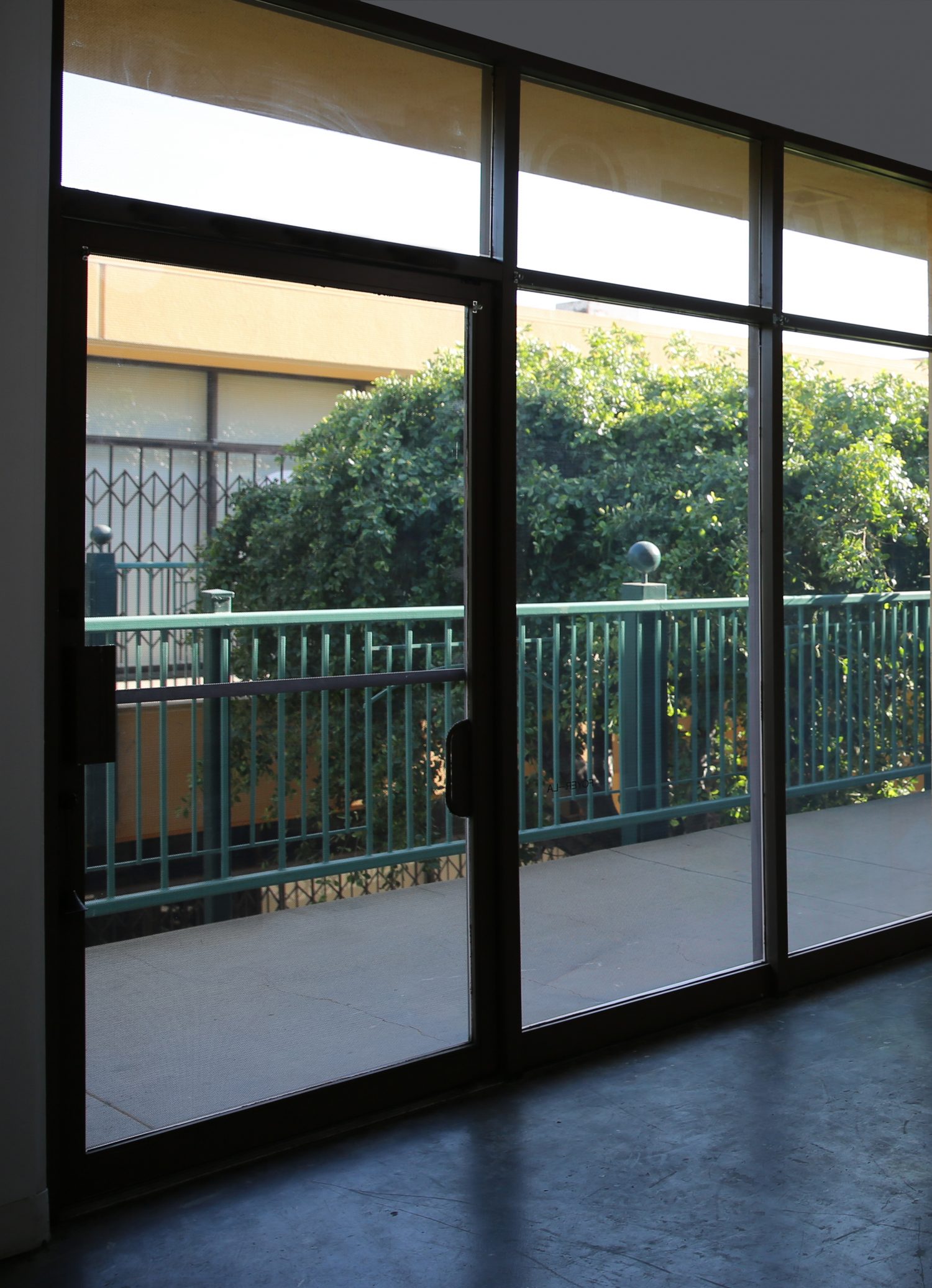
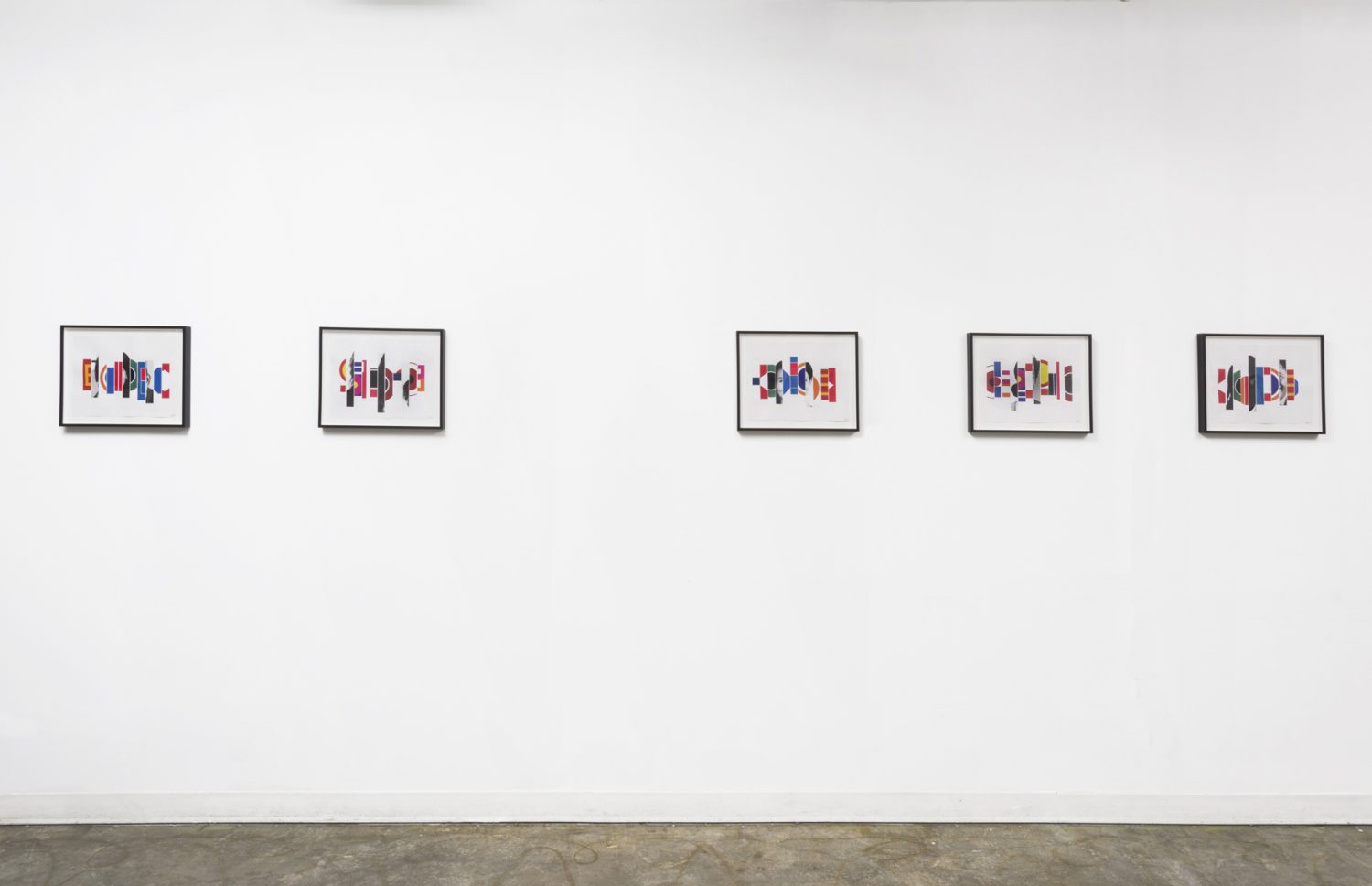
DIS-CONTENT
Amy Barkow
Leslie Brack
David Schafer
November 14-January 16, 2021
In FOYER-LA’s project DIS-CONTENT, three artists: Amy Barkow, Leslie Brack, and David Schafer explore the yearning to be determinate at a time of exceptional fragility. Maybe it is the absurdity of the moment- sculptures made out of a ‘forever’ material, watercolors emerge from the raging fires of global capitalism, and logos stripped of signifiers- that promotes an assertiveness within the haze of our current environmental and cultural transformations.
Foyer-LA
Mandarin Plaza
970 N. Broadway St. #204
https://foyer-la.com/2020/11/21/dis-content/
Morphology of Exchange is an advertising façade composed of thirty modified corporate logos across industries such as banking, oil, fast food, fashion, media, entertainment, automotive, and the military. Stripped of specific identity and reduced to modernist forms of color and code, these logos mimic the corporate landscape that shapes social relations, much like money itself. The installation’s setting at Foyer-LA at Mandarin Plaza, carries historical significance. Built in the 1960s as the first major commercial center in Los Angeles’ Chinatown, Mandarin Plaza reflects the patterns of Chinese immigration and ongoing commercial expansion. Echoing Walter Benjamin’s Arcades Project, the piece reflects on the layered interplay between architecture, consumerism, and identity, recalling how the flâneur once saw their image reflected in Parisian shop windows. The perforated window graphic obscures views into the gallery while allowing those inside to observe the mall outside, creating a contemporary panopticon.
Related Works
- Untitled Logos, 2021
- Selected Professionals with Logos, 2021
- Works on Paper, 2020
- Pantheon, 2020
- Untitled Logos No. 4, 2020
- Partition No. 7, 2020
- Partition No. 6, 2020
- Selected Professionals with Logos, 2020
- Selected Professionals, 2020
- Untitled Logos Series, 2020
- Untitled Logos No. 1, 2019
- Partition No. 5 (Condo), 2019
- Drawings, 2019
- Partition No. 4, 2019
- Partition No. 3, 2019
- Partition No. 2, 2019
- Partition, 2018